Sas Hill is typically a place that almost certainly all Budapest residents have seen for at least one look, yet it does not come to the fore alongside other sights of Budapest. We can see antennas on the hill above the BAH junction, the yellowish, imposing block of buildings of the Arany János High School on the hillside can be seen from afar, perhaps this gives many people a points of reference.
According to legend, the hill got its name from the eagles which took off from here in 1686, on the day of the victory when Buda was recaptured and flew towards Buda Castle. Even in the decades after the Second World War, the Sas Hill, which was then closed to the public, was also surrounded by legends. It was believed to be a secret military base on the hill. In reality, apart from a few anti-aircraft batteries and a mass of ammunition placed in a drilled cavity system, there was no serious armament here.
Currently, the peak and the educational trail on it, as well as the visitor centre can be visited by prior arrangement. This can be done through the contact details on the website of the operator, Danube-Ipoly National Park. The peak can be reached by bus 8E via Korompai Street, or with a little more walking by tram 59, from which the visitors have to get off at Farkasréti Cemetery. Parking is available in the lobby of the visitor centre.

The wooden building of the Sas Hill Visitor Centre fits closely into the landscape, the educational trail starts from the building (Photo: Balázs Both/pestbuda.hu)
The height of Sas Hill is 266 metres, slightly more than that of Gellért Hill, so it is often referred to as the “big brother” of Gellért Hill. It is geologically in line with the southern dolomite-limestone barrens of the Buda Hills, which is closed by Gellért Hill in the east. (Although trees have been planted on Gellért Hill, it is good to know that there has never been a closed, wooded vegetation on this hill before.) Sas Hill is completely surrounded, so only the area around the three peaks and the south side are protected areas. Of the three peaks, only the easternmost can be visited.
First of all, visiting the hill is an outstanding experience in two respects. On the one hand, a wonderful panorama unfolds before us, and on the other hand, it is also special from a botanical point of view, because there are several plant rarities on the hill. The building of the visitor centre shows magnified depictions of plants and animals living on the hill, which can be a little scary, but it is not worth missing out on their viewing.
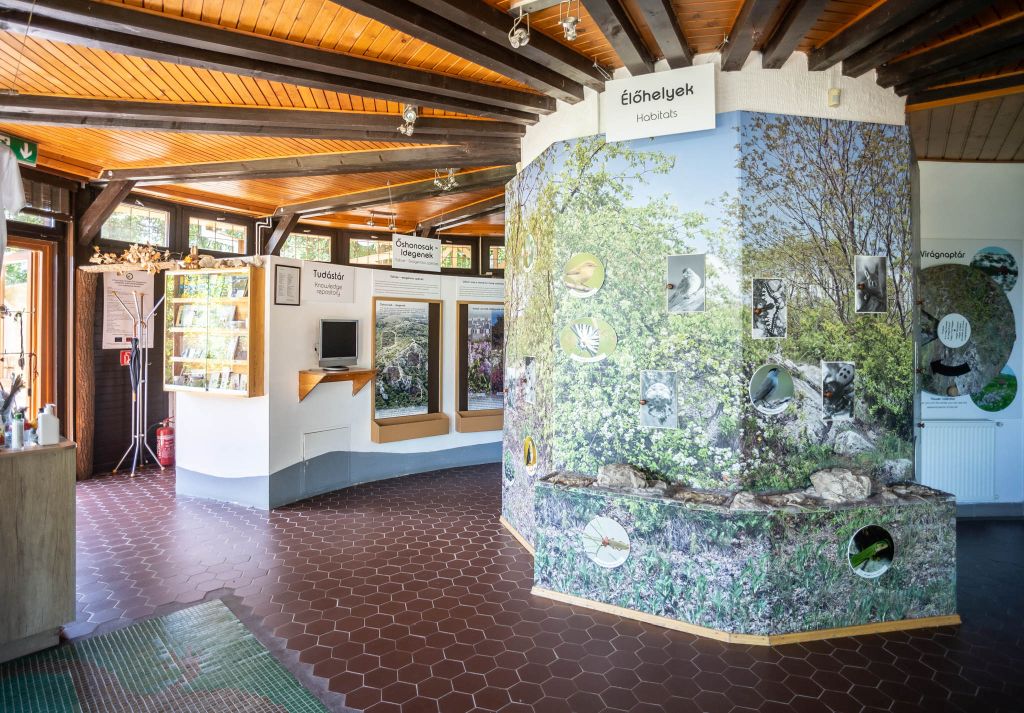
The interactive exhibition space of the visitor centre; the exhibition presents the special flora and fauna living on the hill (Photo: Balázs Both/pestbuda.hu)
The hill can be traversed in two directions via the educational trail starting from the building, we have now targeted the south. At the beginning of our journey, we were greeted by two glass tub-like structures. In one, we saw a green lizard basking in the sun. Unfortunately, we were unable to spot the Pannonian lizard. Of the reptiles, roughly 20 specimens of the caspian whipsnake are worth mentioning as a highly protected organism of the local fauna. To study the lifestyle of the whipsnakes on the hill, mini meteorological stations have also been installed in several places to help them map and better understand their behaviour.
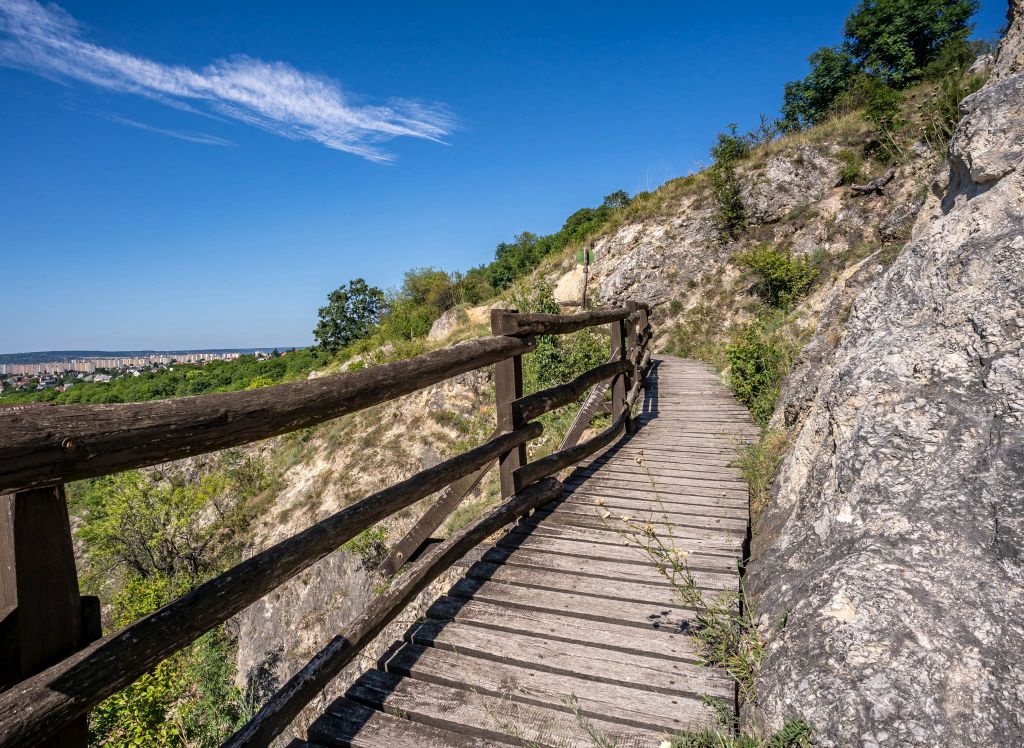
Sas Hill can be explored on an educational trail (Photo: Balázs Both/pestbuda.hu)
Unfortunately, large animals no longer occur on the hill: as mentioned, the hill is completely surrounded. At the same time, foreign plant species are abundant: acacia, idol, lilac, Canadian goldenrod, and other plants “emerging” from the gardens indicate that man has put down his “trademark” in the area.
In the thin topsoil of limestone soils, especially on the southern slopes, downy oaks and open rocky grassland vegetations are the species that make up the natural so-called karst bush forest. As a remnant of former vineyards, we can also find almond trees, as well as black pine left over from the large pine planting waves of the previous century. The maintenance and continuous habitat management of the area gives the national park a lot of work.

The karst bush forest with the southern panorama in the background (Photo: Balázs Both/pestbuda.hu)
On the southern slope, we were greeted by real plant rarities: King Stephen carnation, Hungarian gurgolya, Ephedra distachya (csikófark). The latter is also interesting because dicotyledonous plants, i.e., fruiting and pollinated plant organs, are not found on the same individual. The pollinators grow on Sas Hill, while 3 km's away, on Gellért Hill, only fertile individuals grow.
 Hungarian gurgolya (Photo: Balázs Both/pestbuda.hu)
Hungarian gurgolya (Photo: Balázs Both/pestbuda.hu)
 King Stephen Carnation (Photo: Balázs Both/pestbuda.hu)
King Stephen Carnation (Photo: Balázs Both/pestbuda.hu)
 The pollinator of the Ephedra distachya, the fertile individuals grow on Gellért Hill (Photo: Balázs Both/pestbuda.hu)
The pollinator of the Ephedra distachya, the fertile individuals grow on Gellért Hill (Photo: Balázs Both/pestbuda.hu)

Sunrose (Photo: Balázs Both/pestbuda.hu)
Slowly turning to the north side of the hill, we passed over Bear Rock and then over the entrance to the system, which acts as a military base and air defense shelter, which now operates as part of the Kövesligethy Radó Geophysical Observatory. At the western tip of Sas Hill, as mentioned, there were previously anti-aircraft batteries, which is why the area was closed for decades, thanks to which the natural vegetation, although in a smaller, more degraded part, but was able to survive.

View to the southeast: the MOL headquarters under construction also appearing on the horizon (Photo: Balázs Both/pestbuda.hu)
On the northern slopes, a sea of Sesleria of Buda (budai nyúlfarkfű), which is an endemic species left here from the Ice Age, is magnificent. The Sas Hill is essentially therefore special: species from the Ice Age occur just a hundred metres north of the sub-Mediterranean plant species on the southern slopes. That gives the true botanical value of Sas Hill.

The Sesleria of Buda remained here from the Ice Age (Photo: Balázs Both/pestbuda.hu)
At the end of our journey, we walked up to the easternmost peak, which offers an amazing view.

The Citadel is almost at our fingertips (Photo: Balázs Both/pestbuda.hu)
Of particular interest is the fact that the Buda Castle can be seen from the west, i.e., “from behind”, with the rebuilt Carmelite monastery, the Riding Hall, and the Palace of Archduke Joseph. The dome of Parliament also peeks out from behind the Carmelite building.

The Buda Castle photographed from an unusual direction (Photo: Balázs Both/pestbuda.hu)
We also thought we could see the peak of Ágasvár in Mátra on the horizon, but this is not seen in the photos.

The peak of Naszály can be clearly seen even in the photo (Photo: Balázs Both/pestbuda.hu)
With its barely 1 km walkable educational trail, Sas Hill can be an ideal destination for families, pensioners and interested groups of students due to its proximity to the city centre. The building of the visitor centre also has a washroom, a small buffet and a showroom. So visiting Sas Hill is an easy summer program for a few hours.
Cover photo: The Sas Hill Visitor Centre, with Széchenyi Hill in the background (Photo: Balázs Both/pestbuda.hu)


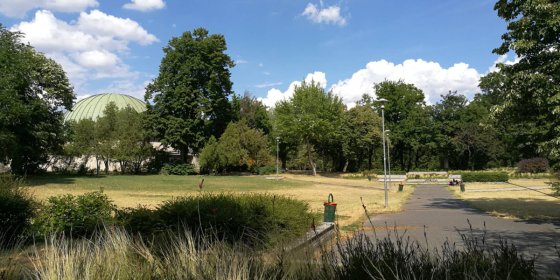
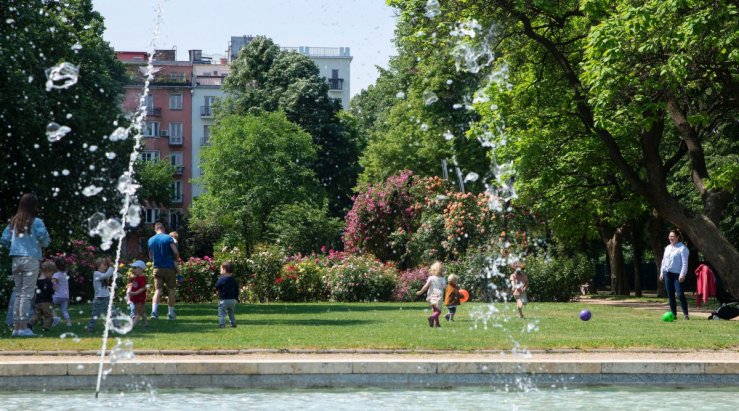
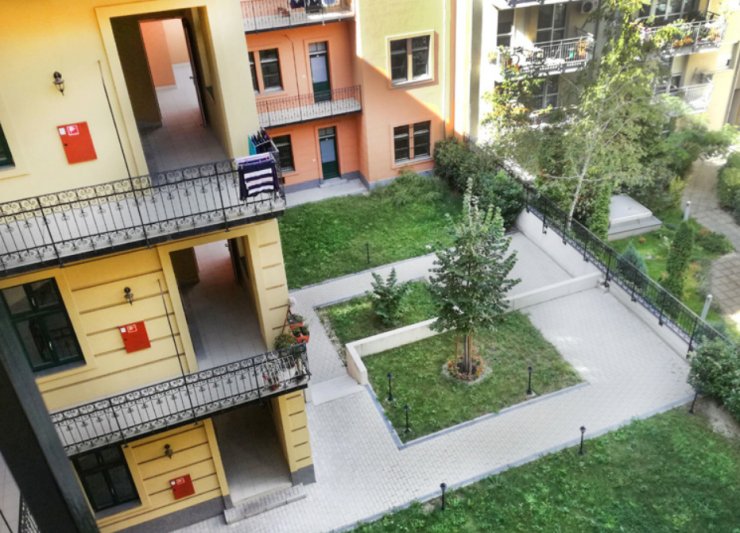

































Hozzászólások
Log in or register to comment!
Login Registration